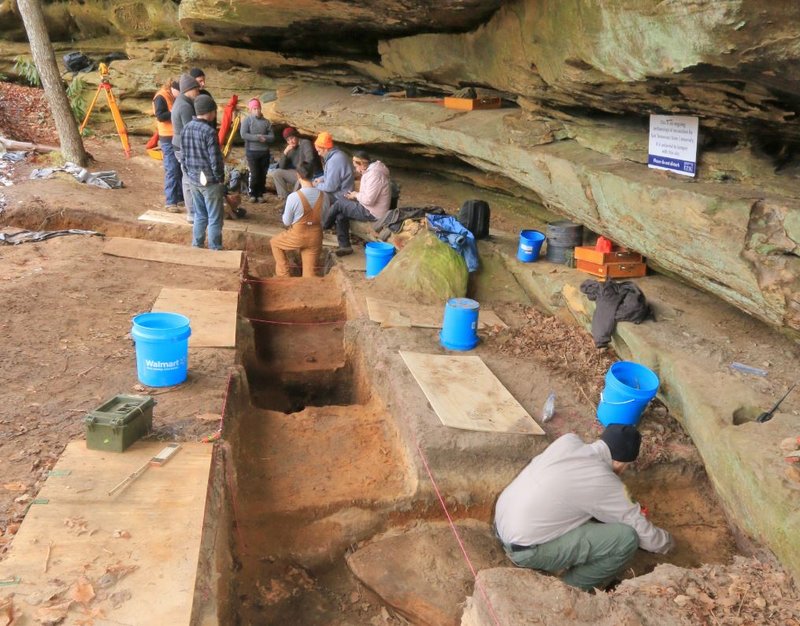Archaeologists Uncover Paleoindian Habitation in Upland Area of Tennessee [View all]
This is an older article but I thought some here (like me) would still find it of interest. 
Map of the Upper Cumberland Plateau:

Popular Archaeology
Archaeologists Uncover Paleoindian Habitation in Upland Area of Tennessee
Wed, Oct 08, 2014
Upland areas, far from the more accommodating lowland environments featuring streams, lakes and valleys, have not been as comparatively rich in yielding evidence for early Native American, or Paleoindian, habitation—at least in terms of permanent, ongoing settlement bases. But archaeological excavations at a rock shelter in the Upper Cumberland Plateau (UCP) of Tennessee are revealing finds that could show otherwise.
"At Rock Creek Mortar Shelter on the UCP, we have recorded a more or less continuous record of human occupation from at least the end of the Pleistocene around 11,500 years ago to about AD 1000," reports Jay Franklin, Associate Professor of Archaeology at East Tennessee University and colleagues. It is unusual because, as they report, "upland areas do not typically fit into conventional models of human settlement, except in cases where they are invoked as marginal areas used for hunting and gathering forays by ancient peoples only to return to their lowland homes."*
Franklin has been conducting archaeological research in the UCP for well over a decade. At an elevation as much as 1,000 feet above the Tennessee River Valley, it comprises part of a larger region of Appalachia historically known as the "Great Wilderness", a cultural backwater. But, for Franklin, this "could not be farther from the truth. Prehistoric Native Americans used and occupied these rock shelters and caves for 12,000 years."*
From within the shelter, Franklin and his team recovered more than a dozen blades from deposits about 1.25 - 2 meters below the surface. They date them to the late Pleistocene and early Holocene periods. Examination of the blades has provided some clues to reconstructing the prehistoric scenario at the location. "A few of the well made blades would be at home in European Late & Epi-Paleolithic assemblages, while a few are poorly executed," report Franklin and colleagues. "This suggests a family group as opposed to simply a group of male hunters. It may have been that older, skilled knappers were teaching younger novices to make blades on site. It may also be that these earliest inhabitants of the UCP were coping with the constraints of using the small rounded local cobbles of Monteagle Chert for blade production (as opposed to large tabular cherts encountered in the lower Tennessee River drainage)." ....
MORE at http://popular-archaeology.com/issue/june-2013/article/archaeologists-uncover-paleoindian-habitation-in-upland-area-of-tennessee


